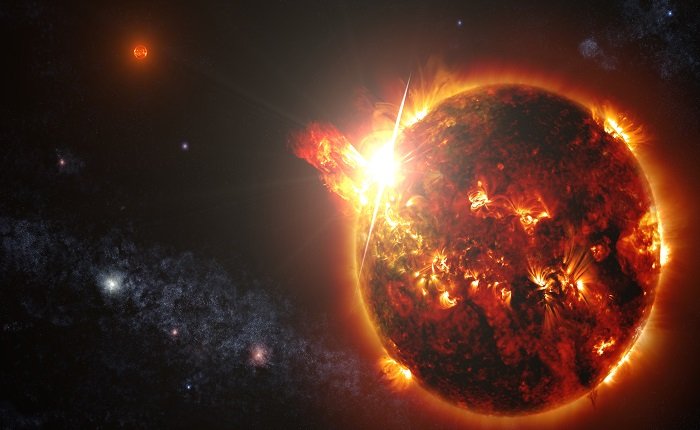What Stars Live the Longest? An Overview of Stellar Life Cycles

The stars we see when we look up at the night sky are not just point sources of light — they are massive, burning sources of gas, each at a different stage in the life of a star. A star’s lifetime depends on its mass, composition, and other factors. One of the more interesting questions in stellar science is what the longest-living stars are. This subject piques our interest and, more importantly allows us to understand the larger machinations of the universe. In this article, we’ll explore what gives some stars longer lives than others, and ask the question: What stars have the longest lives?
Overview of Stellar Lifecycle
Just like humans, stars go through stages of life, from birth to death. A star’s mass is the main factor determining its life cycle. It starts in a nebula, a cloud of gas and dust, where gravity draws matter together into a protostar. As the protostar gains mass and temperature, nuclear fusion starts, signifying the “birth” of the star. The core will keep burning hydrogen until the star exhausts its supply of fuel and its core will evolve into either a red giant or a supergiant, and eventually detonate in a supernova explosion or shedding layers to become a white dwarf.
A star can live a few million years if it is very massive, but billions of years if it is very low-mass. That implies that stars with the most lifespans are ordinarily not the highest, however lower mass and vitality consumption stars.
How Mass Plays a Role in How Long a Thing Lives
A star’s mass is the most important variable in determining its lifespan. More massive stars have much more intense fuel consumption, and so are much shorter lived. For instance, a 10 solar-mass star will use up its fuel in a mere 10 million years — while a star only half as massive as our sun may live for tens of billions of years.
Low-mass stars, more commonly known as red dwarfs, are the universe’s longest-lived stars. They burn their fuel so slowly that they can live for hundreds of billions of years, much longer than even our Sun. This slow burning of the nuclear fuel means red dwarfs could still be glowing in the faaan future long after massive stars have died.
Red Dwarfs: The Old Stars
Red dwarfs are the most common type of star in the universe, and they are also the longest-lived. These stars are relatively small, each having a mass of between about 0.075 to 0.50 times the mass of the Sun. Red dwarfs are exceptionally spent hydrogen (for lack of a better term) — despite their small stature. Using their fuel slowly, they can stay in the main sequence phase (the longest stage of their lifecycle) for several hundred billion years.
Since the universe is a mere 13.8 billion years old, red dwarfs are some of the oldest stars that can still be observed. In fact, the oldest red dwarfs are still in their main sequence while most more massive stars have already gone through their main-sequence phase and have become red giants, fading supernovae, or even black holes.
The Sun: A Moderate Lifespan in Stellar Terms
Our Sun is a G-type main sequence star. G-type stars are close to what is considered the middle range of the main sequence stellar masses. These stars have a mass of around 1.0 solar masses and a lifespan of about 10 billion years. Our Sun, at around 4.6 billion years in, has 5.4 billion years left or so before it exhausts its hydrogen. Even though 5.4 billion years seems like a lot to us, in comparison to red dwarfs’ lives, it is a short period. After the hydrogen is exhausted, there’s expected to be a red giant before the Sun sheds its skin and becomes a white dwarf. Blue giants, on the other hand, would suffer a much different fate. Blue giants are stars that are much more massive than our Sun. Their mass ranges from 10 to 50 solar masses. Because of this mass, a blue giant burns through its material so fast that its lifespan will also be significantly shorter.
The length of the life of a blue giant ranges from 10 million years at maximum to only 100 million years before the hydrogen fuel is consumed. The speedy consumption of fuel creates spectacular, cataclysmic deaths, frequently in a supernova explosion. Following the explosion, what is left of the star will either cohere into one of these superdense neutron stars, or collapse further into a black hole.
There are Stellar Evolution concepts
Stellar evolution is how a star’s structure and energy generation change over time. Stars evolve through several stages starting from a protostar becoming to main-sequence star, and then beyond as a red giant or supernova. How a star will evolve depends on its mass and how much fuel it has.
Low mass stars like red dwarfs evolve significantly slower and have longer lifetimes on the main sequence, whereas massive stars like blue giants proceed through such stages much more rapidly. The trajectory of stellar evolution is a complicated thing, and the science to understand how a star evolves can be applied to give a good estimate of the lifespans for various types of stars.
The Influence of Stellar Composition on Lifespan
A star’s lifetime also depends on its composition, in addition to its mass. Stars that are mostly made of hydrogen and helium have a much longer life span than stars that are rich in heavier elements — the heavier elements cause a star to burn through its fuel faster. In general, the star with the higher metallicity (higher percentage of elements heavier than helium) will burn out faster than the one with lower metallicity.
Heavier elements add to a star’s opacity, so energy escapes the core more slowly and the fusion rate increases. Therefore, high metal stars burn out their fuel at a more rapid rate and have a shorter lifetime than low metal stars.
Stellar Rotation: How It Affects Lifespan
Star lifespans can also be affected by their rotation rate. Fast-spinning stars often have greater magnetic fields, which can disrupt the star’s fusion rates in its core. Faster rotation may allow the star’s internal materials to mix more efficiently, potentially accelerating the fusion process and reducing the star’s lifespan.
In contrast, stars that spin slower might have a more extended, stable period of fusion. This factor, along with a star’s mass and composition, decides how long the star will spend in the main sequence phase and how quickly it will progress toward its next evolutionary stages.
The Lifespan of Binary Star Systems
Stars that are located within these binaries or multiple star systems can have a strong influence on each other’s evolution and existence. These systems consist of stars that orbit each other closely and can create a rich variety of interesting phenomena. Mass transfer between the two stars in a binary system, for instance, can affect the star’s rate of fusion, and therefore its lifespan.
If one star in a binary system is significantly more massive than the other, it can evolve into a red giant or supernova more quickly than its smaller counterpart, which can continue to burn its fuel more slowly and live longer. Thus, the stars’ interaction in the binary system can lead them to have different evolutionary paths that might affect their final lifetimes.
The Fate of High-Mass Stars
Among them, the high-mass stars like blue giants have the shortest lifespans as they expel their fuel at an exponential rate. After burning through their hydrogen, these stars go into the red giant phase, where they burn heavier elements in their centers. Eventually they go supernova, which can lead to the formation of a neutron star or black hole, depending on the star’s remaining mass.
A high-mass star’s death is among the most violent events in the universe. A supernova burns up so much energy, and can be so bright that they can outshine an entire galaxy for a time, and are the source of immense heavy elements such as gold and uranium vital for life on Earth.
Stellar Remnants: White Dwarfs
After stars like our Sun have burned through their fuel, they will lose their outer layers and will be left with a very dense core — a white dwarf. These leftover stellar corpses no longer fuse, but they are still hot for billions of years before slowly cooling off. White dwarfs no longer shine as bright as when they were active stars, but they can keep this state for incredibly long periods—essentially “living” far longer than many active stars.
A white dwarf is generally the final stage of stars with up to 8 solar masses. Remnants offer a view of the eventual fates of most stars in our galaxy.
Conclusion
Rounding it all out, the longest-lived stars are the low-mass red dwarfs, which can persist for hundreds of billions of years — an unfathomable amount of time, far longer than the oldest stars we see today. Star life cycles depend on an intricate mix of variables — including mass, metal content, rotation, and whether the star lives in a binary system. Whereas massive stars like blue giants rapidly burn through their supply of fuel, low-mass stars burn hydrogen much more slowly, allowing them to remain shining substantial longer times.
FAQs
What is the maximum life span of a star? They are red dwarfs, the most long-lived of all stars, and can survive for hundreds of billions of years.
How does a star’s mass play into its life span? Higher-mass stars burn through their fuel more quickly and have shorter life spans, while lower-mass stars burn fuel slowly, allowing them to live longer.
Do binary system stars live longer? The lifetime of stars is dependent on whether the stars are close enough to undergo mass-transfer. Bigger stars could evolve more quickly, while smaller stars could live longer.
Can a star live forever? No, all stars eventually run out of fuel. However, low-mass stars such as red dwarfs can survive for an extraordinarily long time before dying.
What occurs when a death of a high-mass star? High-mass stars frequently terminate their lifecycles with a supernova explosion and subsequently evolve into a neutron star or black hole.




